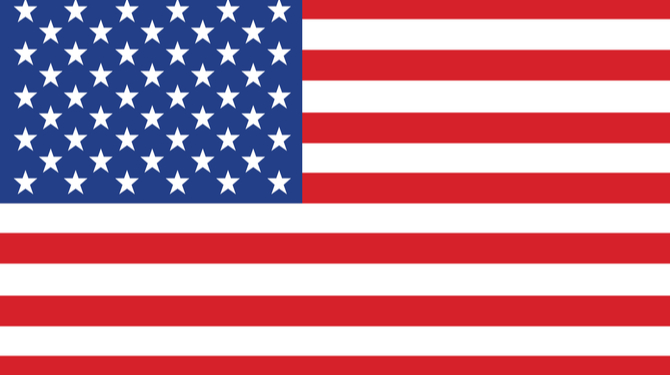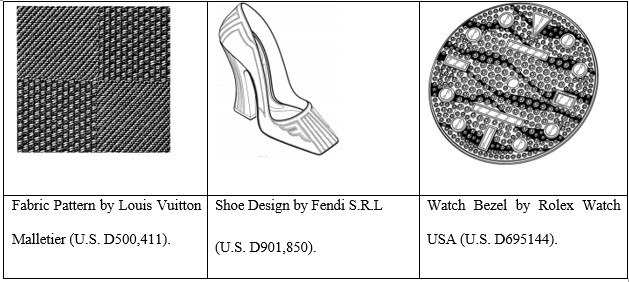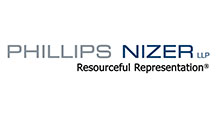
United States
Luxury Law
1 . Trademark
1.1. Sources of law
Filing through the World Intellectual Property Organization (WIPO) under the broadly accepted Madrid System is practical and comparatively quick, but for complicated, multiclass applications for luxury goods or services, doing so is typically more trouble than it is worth. The United States Patent and Trademark Office (USPTO) expects what, by international standards, are excruciatingly exact lists of goods and services in its applications. To make your WIPO application precise enough to be acceptable to the USPTO, you will need to hire United States counsel, but be mindful that, in nearly all cases of which we are aware, fixing the problem that way has proven more expensive than would have been the case had the applicant bypassed WIPO and instructed American counsel to file a national application directly with the USPTO in the first instance.
Given that the United States allows marks to remain unregistered and yet receive full protection under the law, a simple examination of the USPTO database will not suffice to give a reasonable measure of confidence that a proposed mark can be used without fear of a third-party claim. That is the reason we strongly encourage our luxury clients, in other than limited and specific circumstances, to authorize us to conduct what is known as a full search of multiple databases. Consider that in light of the cost to a luxury brand if something goes so wrong that the product has to be pulled at launch (to name just one of several possible nightmare scenarios).
1.2. Substantive law
Given that luxury brands are particularly susceptible to infringement, dilution and flagrant counterfeiting, in the United States, a large part of trademark law as applied to luxury goods and services is about having both a watchful eye and continued attention to detail. With much typically at stake for a luxury brand, trademark protection and enforcement should remain an absolute priority in the American marketplace.
1.3. Enforcement
Once granted, registrations must be renewed every five years for the first 10 years, and then every 10 years after that. Renewal requires demonstration to the satisfaction of the USPTO that the mark has been in continuous use in interstate commerce in the form, substantially, in which it was registered. Any goods or services no longer offered under the mark would need to be stricken from the registration at that time.
The mark must be used as a mark, not merely a decorative element. For example, the demure Lacoste crocodile or the Ralph Lauren polo player on the top left of the front of a knit shirt is a mark because it is consistently used that way to identify its source. Hang tags that contain marks are excellent examples of good usage of words and devices as marks. For anything portable, packaging is the next point on which items can be identified with marks. Indeed, for alcoholic beverages, bottle shapes (as trade dress) and labels (incorporating trademarks) are just about the only reliable ways to identify the source of origin of the contents, and in a market in which a bottle of red wine, for example, can cost a few dollars or thousands of dollars, the distinction (until the bottle is opened) is all about what is on the label. For either consumer goods or services, the use of a mark on a sales website to identify the source of what is being offered is also use as a mark.
Color can be a trademark in the United States. In the luxury area, the classic example is Tiffany, which has even taken the trouble to get its own Pantone shade for its distinctive robin-egg blue (Pantone 1837 Blue). Successfully claiming color as a mark on products themselves as opposed to their packaging, is more challenging, requiring a clear showing of secondary meaning. Rather famously, Christian Louboutin was able to assert trademark rights in its red soles for shoes (Christian Louboutin S.A., et al. v. Yves Saint Laurent America, Inc., et al., 695 F.3d 206 (2nd Cir. 2012)). Christian Louboutin lost the battle but won the war: the Second Circuit Court of Appeals held that Saint Laurent shoes that were red all over (soles and uppers) did not infringe on the registration held by Christian Louboutin for its red soles (giving the immediate win to Saint Laurent), but the Louboutin registration was held as valid and enforceable against shoes with uppers in any color other than red because Louboutin was able to sustain its claim that the soles had acquired secondary meaning.
Another distinction of United States trademark law is the willingness of the USPTO and the courts to reject efforts to register terms that are merely descriptive of the goods or services they identify. Given the quantity of those marks that come into the United States from other nations, the USPTO has developed its Supplemental Register as a companion to its main trademark register, which is known as its Principal Register. Registration on the Supplemental Register provides modest but authentic advantages, and after five years, the opportunity arises to demonstrate secondary meaning. If the registrant can show that the registered mark has come to be known in the marketplace, not as a mere description for the applicable goods and services but as a source identifier, the USPTO will permit the mark to be registered on the Principal Register if a new application is filed with sufficient proof.
2 . Copyright
2.1. Sources of law
One of the singular features of the common law method of jurisprudence is that, during key moments when judges have not had available to them the statutory tools to provide what they felt were just solutions, they have reorganized whatever was available to approximate the results they believed to be fair. That is essentially the origin behind the evolution of the current Copyright Act of 1976 into an instrument for protecting fashions and other categories of industrial design that inhabit the luxury market.
2.2. Substantive law
The courts have filled a statutory gap in that the United States has never adopted EU-style legislation to protect many of the designs, both classic and au courant, of the kind familiar to the international market for luxury goods. The Supreme Court brought order to a developed body of law under which various federal appellate courts had applied different standards in examining whether decorative elements in fashion items were protectible by copyright. In Athletica, LLC v. Varsity Brands, Inc., 137 S. Ct. 1002 (2017), the court effectively said that, if you could conceptually take a fabric design off a garment and frame it as art, it could be protected by copyright if it met minimum standards of originality. For three-dimensional elements, the test would be whether they could conceptually be put on pedestals as sculpture if they could pass the same minimal standards of originality. That is, the ornamentation on a belt buckle or bracelet clasp might be protectible but only to the extent that it has nothing to do with keeping the belt or bracelet closed.
That still leaves garment shapes — the core of what is typically considered clothing design — unprotected in any way, a fact that helps explain why companies like Zara have such free reign in the United States to copy luxury designs. Whenever it is asked (as it has been for generations) why the Copyright Act does not recognize droit moral (the inalienable moral right of the creator not to see his or her creation altered or disturbed by others) in the protection of works of art or literature, it is in part because assessing artistic or cultural worth is not seen to be the business of the legislature or courts.
There are two areas of our copyright law that often remain in equal parts mysterious and frustrating to practitioners from other countries: the United States versions of the concepts of work made for hire and fair use. Both are statutory and stem in different ways from the core American conception of copyright as a property right and not a personal right: a work protected by copyright is legally a commodity, as fungible in the marketplace as lumber or automobiles.
It is therefore possible for an author to fully divest all rights to his or her creation, from the start, as a work made for hire, such as when making contributions to collaborative works or whenever doing anything creative and protectible in the service of an employer. Due to the work made for hire concept, a frustrated CGI artist cannot demand that a film be pulled from distribution due to an unresolved creative dispute, and an employee who designed a fabric pattern cannot make a similar claim about a dress using the pattern that has found its way into the retail channel despite his objections.
2.3. Enforcement
If a work is a statutorily defined “United States work,” registration of the copyright in the work with the federal Copyright Office is a prerequisite for commencing an action for infringement (17 U.S.C. §101). We continue to counsel that even foreign works of importance to their owners should also be given United States copyright registration. The registration certificate brings with it a presumption of the validity of the copyright; if the claimed infringer believes otherwise, it is its burden to prove that. Just as important, online retailers and others in American commerce are used to the comfort of seeing a valid registration as demonstrative of protectability, and having a registration certificate to attach to a cease-and-desist letter or takedown notice is typically a good way to bring potentially decisive firepower to bear.
Fair use started as a judge-made concept, but it has been codified in the current Copyright Act (17 U.S.C. §107). In simple terms, the statute lays out four factors, strictly advisory as enacted, but unfailingly applied by federal courts as if they were legislated requirements to assess whether a copyright-protected work may be used in some form, format or manner by others without permission. As applied by the courts, the fair-use doctrine can sometimes appear to slam through copyright law like an errant football. For instance: ever since Andy Warhol began creating silkscreens of real people and things (he started in 1962, with the US one-dollar bill as his subject), his practice of basing them on images (largely photographs) made by others had been accepted as fair use. Suddenly, nearly sixty years later, that was no longer necessarily true (Andy Warhol Foundation for the Visual Arts, Inc. v. Goldsmith, 992 F.3d 99, (2d Cir. 2021), amended by (No. 19-2420-cv), 2021 WL 3742835 (2d Cir. Aug. 24, 2021)).
3 . Design
3.1. Sources of law
Design patent law was first drawn up in the 19th century to provide protection for ornamental designs in useful articles — in particular ornamental designs in cast iron, but also creative designs of fabrics, rugs and clothing of the era. At the time, there was no means of protecting the ornamental designs because copyright law did not extend to three-dimensional works, and patent protection was only available for the functional and utilitarian aspects of articles of manufacture. Efforts to remedy that deficiency ultimately came to fruition in 1842 in the form of the first design patent law (Act of Aug. 29, 1842, ch. 263, sec. 3, 5 Stat. 543, 543-44). That statue was the foundation for modern United States design patent legislation, through the current law, which provides protection for “original and ornamental design for an article of manufacture...” (35 U.S.C. §171).
3.2. Substantive law
Today, all manner of ornamental design in luxury articles can be protected under design patent law, including fabric designs and patterns, articles of clothing, and consumer products, as shown in the examples below:

The design must contain novel and non-obvious ornamental features that are not purely functional. Unlike copyright and trademark law, the inventor’s own prior public disclosure and use of the subject design may create a bar to obtaining a design patent. The law does, however, give a one-year grace period during which the inventor may publicly disclose and use the invention without creating a bar to patentability.
A design patent application in the United States must be filed in the name of the inventor. The application can, however, immediately be assigned to an entity. The employer of an inventor whose design was created for the company should have an employment agreement in place that requires employees to make such an assignment and to cooperate in the prosecution of applications. The USPTO typically takes 12 – 18 months to grant a patent based on an application. A granted patent lasts for 15 years.
3.3. New technologies
Just as non-fungible tokens (NFTs) were among the must-discussed topics of IP lawyers a couple of years back, artificial intelligence (AI) has become the focus of much legal and policy debate. The difference is that AI has long been with us, will have grown more sophisticated somewhere in the world by the time you finish reading this entry, and, most importantly, is here to stay in a meaningful and legally challenging way.
A core problem can be illustrated by the following example: someone has a program that trolls the internet for dress designs and copies into a database a few million examples. An end user then enters the command into the database interface “cocktail dress in the style of Christian Dior, New Look” and on their screen appears a frock emulating the best work of the master, circa 1947, so finely rendered that you would have to do research to determine if the dress was an original Dior design or something new created by AI. Suppose that the images being copied are, however, protected by copyright, by design patent or as trade dress. Suppose as well that the user then sells the images as being “in the style of” a rights holder who granted no authorization to have their name and reputation associated with the item. Does the end user who requested that the AI deliver the dress have the right to claim copyright ownership in its protectible elements? Who is liable for causing the trouble?
In Naruto v. Slater, 888 F.3d 418 (9th Cir 2018) the Court of Appeals of the Ninth Circuit decided that the Copyright Act is for human creations and that, when filing for copyright protection, only homo sapiens need apply. In Thaler v. Shira Perlmutter, Register of Copyrights et al., 2023 WL 5333236 (D.D.C. 2023), a software developer sued the Copyright Office after it denied his application to register a visual work of art that he claimed was created “autonomously” by an AI program he had authored; the Copyright Office had responded that only humans can be authors and that a machine had done the core creative work in this instance. In short, human authorship is an essential part of a valid copyright claim.
That leads us to the following assumptions and predictions:
- The programmer who writes the AI software can get a copyright in their code, but whatever the code produces on its own from data inputted into it is not protectible by the copyright.
- The output of an AI program is not protectible by copyright because a human did not create it, but an individual who modifies the output such that it contains a modicum of human originality in its content, arrangement, selection, or coordination may be able to obtain copyright registration for that derivative work (that is, for the modifications made by the person).
- If the output of an AI program resembles a copyright-registered work of an artist to the point that, were it to have been made by a person, it would infringe on that work’s copyright, it would so infringe copyright under the same standard of review as if created by any other method. Of course, you cannot sue software, but the people who instructed the AI program to create the infringing work would be exposed to claims of infringement.
- Finally, we might think about building a new category of rights to stop vendors of AI from training their software to create content that looks characteristic of an author’s style and is advertised as such — even if the works so created do not actually infringe on copyrights in any of the author’s works. Those new rights might be analogous to the concept of droit moral (moral rights) found in European legal system and they might involve elements of the right of attribution and even a right to integrity of expression. All of that is to be determined.
3.4. Enforcement
After issuance, a design patent can be enforced against any person or entity that is infringing the patented ornamental design. Determining whether there is infringement is a two-part test:
- the court must first construe the claim to determine its meanings and scope; and
- the fact finder (that is, the judge or the jury, as the case may be) must compare the properly construed claim to the accused design.
An action for design patent infringement typically seeks an injunction against further sales of the infringing product and damages to compensate the patent owner for the infringement.
4 . Right of privacy, publicity and personal endorsement
4.1. Sources of law
Unlike copyright, trademark and design patent law, privacy and publicity are governed largely by state law. Currently, over thirty states recognize the right of publicity in some form, either under a state statute, state common law or both.
4.2. Substantive law
The classic rule was that the right of publicity expires on the death of the rights holder, but a majority of the states that recognize the right for their residents now extend it past death. The term and other considerations vary from state to state, with California, the home to many celebrities, recognizing the right for 70 years after death. Two other states (Oklahoma and Indiana) take it to a full century of protection.
Although some states will infer a license of publicity rights from a course of conduct, good practice, as with nearly all important business relationships under the common law, is to have a properly detailed agreement. See Madrigal Audio Laboratories, Inc. v. Cello, Ltd., 799 F.2d 814, 822, 230 U.S.P.Q. 764 (2d Cir. 1986). As with any license, one covering the right to use a celebrity’s name, image, voice and other indicia of personality requires a clear grant of rights, performance and payment provisions, but of particular sensitivity these days is the morals clause (also called a moral turpitude clause), which grants the licensee the right to exit the deal, along with other rights, if the celebrity participates in wrongful acts during the contract term.
It has long been the practice, whenever engaging a celebrity, influencer or anyone else to work with a luxury brand, to add a morals clause. It gives a contractual “out” in the event that the person gets into serious trouble, such as criminal activity or the commission of an act that is immoral under generally accepted standards (the definition of which could vary greatly depending on era and circumstances). In the current environment in the United States, where the habitually famous can be “cancelled” (the electronic-age equivalent of “shunning”), for making statements that are potentially dangerous to a brand — even if thoughtfully expressed or factually correct — luxury brands typically insist on morals clauses that give them broad leeway. It is therefore not unreasonable for a brand to seek to include a clause that gives it the right to push the “eject” button immediately and without notice for any reason it deems appropriate for preserving its reputation.
The celebrity may insist on exit compensation, whether determined later by arbitration or otherwise, but that can be the subject of negotiation. The main point is that, if the celebrity becomes a potential liability, even under circumstances that, in a more gracious age might have seemed unfair or even unjust, a luxury brand can easily find itself in an incredibly difficult position overnight, and contracts should be drafted with that in mind.
4.3. Enforcement
Celebrities can bring great benefits as licensors and endorsers, as many luxury brands have demonstrated over the years. Running in a parallel course now are influencers who, even if self-made, self-taught and free from supervision or editorial oversight, can yet have a powerful effect on brand recognition and acceptance.
An age of interlayered surprises breeds unexpected actions and counteractions. In response, custom and the law may bend, the former in curious ways and the latter in a manner intended to catch up. This is, accordingly, a good moment for luxury brands to pause, reassess their values and priorities and to check in with counsel. Chances are, something different will need to be done to keep legal practices both creative and vital.
5 . Product placement
Product placement has become routine in films, video games and other media. Unlike traditional advertising, in which the brand controls the totality of the message, product placement, by definition, means that the brand appears in a subordinate role to a larger message controlled by others. Luxury brands must therefore be demandingly exact in the description in product placement contracts as to:
- what product will be featured;
- in what context in the story or sequence of events it will be shown;
- how long it will appear on screen or, for interactive content, the average amount of time it likely will appear;
- how it will be used, adapted or otherwise incorporated into the action or, for interactive content, the user experience;
- with what other products will it be shown or to which it will be compared in some way; and,
- notably for luxury goods, how will the overall effect remain consistent with the brand’s message of product exclusivity and desirability?
Of particular sensitivity, of course, depending on product and brand, are uses in connection with alcohol, tobacco, controversial topics, sex and violence.
6 . Protection of corporate image and reputation
A key question for luxury goods is the place of gray marketing as a potential threat to the image and reputation of a brand. Gray marketing has long stood on the wobbling cusp that separates the American zealousness in protecting proprietary rights from the American ethos of value shopping. The “cheat” about gray marketing is that the consumer gets pretty much what they want from a luxury (or other) import even as the authorized American distributor or vendor is bypassed. The authorized importer may offer a warranty customized for the US market that does not apply to gray marketing product units.
Generally, gray marketing is not illegal in the United States, in fair measure due to the “first-sale doctrine.” That is, if something is sold by the trademark owner into commercial channels, its resale in the United States is not something that the owner of the mark can seek to control — even if the first sale was outside the United States. Where things get potentially difficult is when there are material differences between the authorized goods and the gray goods such that marketplace confusion might arise. It is worth noting that the United States International Trade Commission (ITC) will sometimes come to the aid of trademark owners in enforcing their right to block the importation of gray-market goods that are materially different from the goods bearing their marks that are authorized for sale within the United States.
The law has remedies for wrongs, but ultimately, of course, there is no remedy for a potentially damaging practice legally done. About the easiest way to avoid problems with gray-market luxury goods is to price products uniformly throughout the markets into which they are sold, worldwide, thereby eliminating the incentive to sell gray-market versions of luxury goods, which are normally less expensive than the authorized imports. Another tool is to highlight, in advertising and through the media, the benefits of buying the United States version of a particular product (by, for example, receiving a American longer warranty). The United States remains committed to enforcing intellectual property rights, but just about everyone loves a bargain, even in the luxury market. That basic fact should always be considered in making the calculations on what to import into the United States and at what price relative to prices offered in other countries.
Authored by Alan Behr and, for design patents, Tod Melgar. Editorial and research assistance by Karr Washington, an associate of the firm, as well as Esther Thiering, Laura Voitglaender, and Andreas Langen while serving as interns at Phillips Nizer LLP.
3-6 PQE Corporate M&A Associate
Job location: London
Projects/Energy Associate
Job location: London
3 PQE Banking and Finance Associate, Jersey
Job location: Jersey


 Alan Behr
Alan Behr Tod Melgar
Tod Melgar

